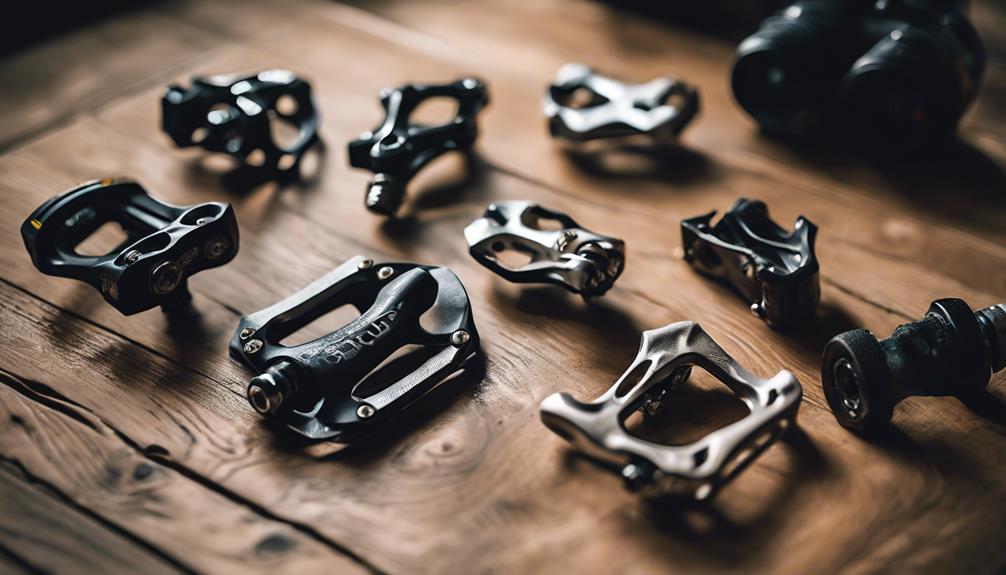Mountain biking is an exhilarating sport that combines the thrill of cycling with the challenges of rugged terrain. One of the key components that can significantly influence your riding experience is the choice of pedals. Selecting the right mountain bike pedals can enhance your performance, improve your safety, and increase your overall enjoyment on the trails. In this article, we will explore the different types of mountain bike pedals, their benefits and drawbacks, and how to choose the best pedals for your riding style.
Types of Mountain Bike Pedals
Mountain bike pedals can be broadly categorized into three main types: platform pedals, clipless pedals, and hybrid pedals. Each type has its own set of advantages and disadvantages, catering to different riding styles and preferences.
1. Platform Pedals
Platform pedals are flat and do not require special shoes. They provide a large surface area for the rider’s foot, which can be advantageous in certain situations.
- Pros:
- Easy to use and suitable for beginners.
- Compatible with any type of shoe.
- Allows for quick foot release in case of a fall.
- Can provide more freedom of movement.
- Cons:
- Less efficient power transfer compared to clipless pedals.
- Feet can slip off the pedals in challenging conditions.
- Less control when navigating technical terrain.
2. Clipless Pedals
Despite the name, clipless pedals actually require specialized shoes that clip into the pedals. This setup offers a more secure connection between the rider and the bike.
- Pros:
- Enhanced power transfer due to the secure connection.
- Improved control over the bike, especially on descents.
- Reduced risk of foot fatigue on long rides.
- Ability to pull up on the pedals, providing more power on climbs.
- Cons:
- Requires practice to get comfortable with clipping in and out.
- Can be difficult to disengage in emergency situations.
- Special shoes are necessary, which can be more expensive.
3. Hybrid Pedals
Hybrid pedals combine features of platform and clipless pedals, offering versatility for riders who may want the option to use either system.
- Pros:
- Flexibility to switch between clipped and flat shoes.
- Good for commuters or riders who like to mix styles.
- Can accommodate different riding conditions.
- Cons:
- May not provide the same level of efficiency as dedicated clipless pedals.
- Can be heavier than single-purpose pedals.
Factors to Consider When Choosing Mountain Bike Pedals
When selecting mountain bike pedals, it’s essential to consider several factors to ensure you choose the best option for your needs.
- Riding Style: Consider whether you will be racing, trail riding, or downhill biking. Each style may benefit from different types of pedals.
- Terrain: If you frequently ride on technical trails with steep drops, clipless pedals may provide better control. Conversely, if you’re riding in less technical areas or performing tricks, platform pedals may be more suitable.
- Experience Level: Beginners might prefer platform pedals for their ease of use, while more experienced riders may benefit from the efficiency of clipless pedals.
- Weight: If you’re a competitive rider, the weight of the pedals can impact your performance. Lightweight clipless pedals are typically favored in racing scenarios.
- Budget: Pedals come at varying price points. Determine how much you’re willing to invest in your pedals, keeping in mind that higher-quality options often provide better performance and durability.
Popular Brands and Models
Several brands have established a reputation for producing high-quality mountain bike pedals. Some of the most popular include:
- Shimano: Known for their reliable clipless pedals, Shimano offers various models suitable for different riding styles, such as the Shimano PD-M520 for mountain biking.
- Crankbrothers: Specializing in clipless pedals, Crankbrothers’ Eggbeater series is renowned for its lightweight design and excellent mud-shedding capabilities.
- DMR: DMR provides durable platform pedals, such as the V12, which feature a concave design for improved grip.
- Race Face: Race Face produces both clipless and platform pedals, with the Atlas platform pedal being a favorite among aggressive riders.
Case Studies: Performance Impact of Pedal Choice
Research and anecdotal evidence suggest that pedal choice can have a significant impact on performance and rider experience. A study conducted by cycling experts found that riders using clipless pedals experienced an average increase of 15% in pedaling efficiency compared to those using platform pedals. This increase can be crucial in competitive scenarios where every watt counts.
Additionally, a survey of mountain bikers revealed that 70% of respondents who transitioned from platform to clipless pedals reported improved control and stability on technical descents. Riders noted that their confidence grew as they became accustomed to the feel of being clipped in.
Conclusion
Choosing the right mountain bike pedals is a personal decision that can significantly influence your riding experience. Understanding the differences between platform, clipless, and hybrid pedals allows you to make an informed choice based on your riding style, terrain, experience level, and budget.
Ultimately, whether you prefer the freedom of platform pedals or the efficiency of clipless pedals, selecting the right pair can enhance your performance on the trails. As you gain more experience and confidence in your riding, you may even find that your preferences evolve, leading you to explore different pedal options. Remember, the right pedals can make all the difference in your mountain biking journey.
